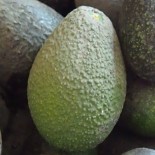Polish girl living in Chile with Chilean family
Simple diary made by Polish girl living in avocado capital of Chile describing living in Chile, with Chilean family, adjusting to the culture, language and differences
Curanto – the best of Chiloe
With its over 6000 km long, Chile as one country represents different climatic zones as well as different cultural influences. From desert dryness to green, rainy forests and lake districts. Each region is different and has to offer something unique. The only thing that is shared is the coast and rich supply of different seafood. And seafood is so popular, easily available and really cheap especially in the South of Chile in the Los Lagos region. This is the part of Chile with historical heritage of indigenous Chilean People Mapuche, which in the Mapuche language (Mapudungu) means People of the land.
One of the great tradition of this people was cooking delicious dish called Curanto. When you are travelling in the South of Chile, especially island Chiloé, this is the dish you cannot miss. Curanto, which in Mapudungu means cooking in the stone, is a meat and seafood dish traditionally prepared not in the kitchen but in the hole in the ground filled with hot stones. When stones are red hot, curanto ingredients are put in layers and everything is covered with large Chilean rhubarb leaves called nalca or champas leaves and steamed them for several hours.
Below is described the process of preparing curnato the tradition way as it was described in 1870s by Recaredo S. Tornero. This is a citation from a blog.
[Curanto] is a type of banquet or feast that they celebrate in the fresh air, always at the edge of the beach, and very frequently since there is never a lack of pretext: now a wedding, a baptism, a sick person now out of danger, a good harvest, finishing a house, a happy return from the mountains, or simply the desire to have a good time. The curanto is prepared as follows: They select a site convenient to the edge of a pebbly beach and there they dig a hole a yard deep and equally wide and light a violent fire in the bottom. When the sides of the pit are well heated, it is a sign that it is ready to receive the infinite variety of foods that make up the curanto: potatoes, ham, pork, lamb, and all kinds of shellfish, mainly clams, of which there are an abundance, requiring no more work to obtain than scratching around in the sand. Then they cover the bottom and sides of the pit with leaves of fern or nalca, and continue adding the foods mentioned above in layers, separated one from another and with plenty of seasonings, until the pit is completely full. Then it is covered with another layer of rocks and while the delicious curanto cooks, the guests dance the famous seguidilla, a kind of resbalosa [folk dance, literally “slippery”] for two couples, accompanied by harp and guitars. It seems unnecessary to add that during all this potato aguardiente [liquor] and apple chicha [hard cider] preside over the entire fiesta.[6]
Nowadays, travelling to Chiloé most often in restaurants and mercados we will find curanto from the pot, so called pulmay (ES: curanto en olla). Where instead of nalca leaves the cabbage ones are used.
So what can we except to get while ordering pulmay. Well, curanto has all the best: seafood (clams, mussels), chicken, sausage, pork accompanied by potato bread called milcao (dark one) and Chapalote (white one). It is served with broth extracted from cooked ingredients (with a delicate seafood flavour) and white wine.

Curanto broth [Dalcahue]
For those interested in preparing pulmay at home here is a recipe in Spanish.
And below you will find original Mapuche recipe for curanto.
Curanto dish has even inspired artist to write song. It is called El Curanto. Below is a text and translation into English.




